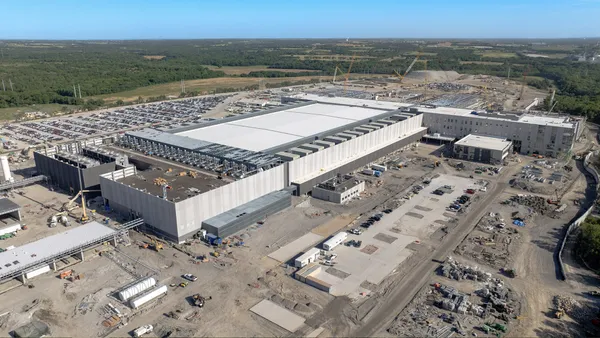Though naturally skeptical of new technologies that too often promise more than they deliver, Turner Construction Chief Innovation Officer James Barrett has reason to be optimistic about AI’s ability to enhance preconstruction tools.
“We see a lot of startups with very bold, ambitious, broad claims,” said Barrett, who helped launch Turner's’s virtual design and construction team 15 years ago. “But when people show up and say, ‘Look, I’ve got this very specific problem to solve, and I’m using AI for it,’ that’s more credible — far more credible.”
ALICE Technologies, an AI-powered construction simulation platform that enables contractors to set up projects and “build” them virtually with a variety of different inputs before physical construction begins, is one of the tools that meets Barrett’s credibility test.
“We’re talking to them quite a bit because we like that it can also be used during production, as you’re putting your budgets together,” Barrett said. “By bringing that into preconstruction, we can fix problems as we’re planning a project so we avoid having to deal with them during construction.”
Preconstruction — the initial phase of a project when contractors plan and schedule a job’s entire scope, estimate costs and analyze needs — has always been a crucial part of the construction process. But only recently have technology developers turned their attention to how it can make an entire project run more smoothly.
Using cloud technology as well as machine learning, AI, drones and 3D modeling, the new generation of preconstruction technologies improves efficiency and saves time by eliminating the need for manual cost estimating and reporting, reducing errors, improving accuracy, mitigating risk and making curated data available for real-time decision-making throughout a project’s life.
Connecting with the back office
Many contractors have some catching up to do when it comes to preconstruction technology.
“I think a lot of people still use Excel and very homegrown platforms” for preconstruction, said Michael Boren, chief technology officer for Beck Technology, a preconstruction data lifecycle company that recently partnered with Togal.AI, which offers machine-learning takeoff software, to improve the speed and quality of 2D takeoffs while simultaneously building construction estimates.
“All it takes is for one estimator to accidentally delete a cell in a spreadsheet, and all of a sudden, nothing’s calculating correctly, but you don’t know it,” Boren said. “Technologies like ours maintain data integrity as you pass it off downstream to the jobsite."
In its quest to be “America’s most skilled builder,” Tempe, Arizona-based Sundt Construction has worked closely with Beck to help create DESTINI Estimator, a one-stop estimating platform that allows contractors to pull reports, execute takeoffs and see cost history on one platform.
“Now, more than ever, we’re chasing more work with the same amount of people,” said Melissa Love, Sundt’s project controls manager. "So, my goal is to make every estimate as efficient as possible."
Collaborative benefits
Faro Technologies helps contractors in the precon phase bring the real-world environment back to the office so that more eyes can collaborate on it without going to a jobsite, said Kyle Tarr, Faro senior business development manager. The Lake May, Florida-based company offers hardware and software that enables high-precision 3D capture, measurement and analysis of projects and sites.
“The teams on large construction projects are getting bigger and bigger, so being able to essentially bring that real-world project digitally to everybody is a huge collaborative benefit for the contractor,” he said.
At Turner, Barrett said, the preconstruction process is becoming more and more granular. “Some day, we will plan down to the nuts and bolts — everything — because that’s the opportunity.”
As he’s watched preconstruction technology take big leaps forward over the past five years, he’s grown more optimistic about the possibilities.
“It’s easy to just fall into the hype and rattle off names of software,” he said. “But I think over the next five years, we’re going to see transformational change come to the industry because these new technologies are addressing real problems.”












